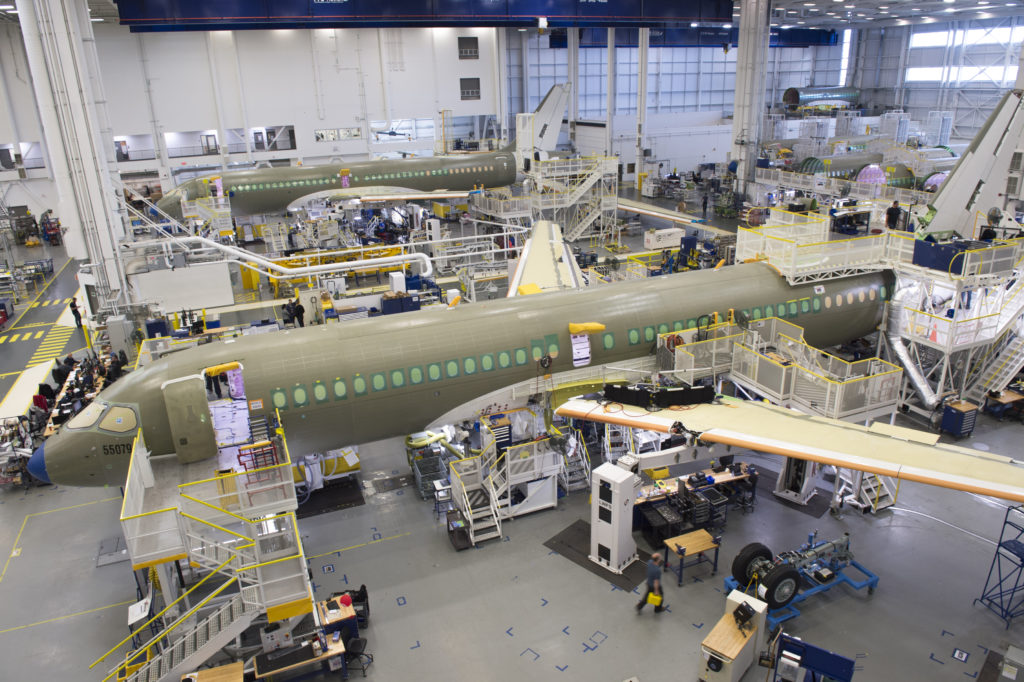Estimated reading time 6 minutes, 51 seconds.
As the aerospace industry slowly emerges from its Covid-19 slumber, it faces a number of challenges, some of which it was already confronting before the pandemic hit.
Several sector issues were discussed during the 6th edition of the Global Aerospace Supply Chain Summit in Montreal under the theme, “Reinventing Ourselves in a Post-Covid Era.”

The issues included the decarbonization of the sector, cybersecurity, the digitalization of processes, collaborative innovation strategies with startups, innovative small and medium size enterprises, and strengthening the supply chain. But the biggest challenge is a serious labor shortage, which may make growth prospects difficult for some companies. In fact, a poll taken during the summit, which attracted 500 in-person attendees and a similar number of virtual attendees, revealed 70 percent of respondents listed a labor shortage as their biggest concern.
“A labor scarcity represents a major risk to our competitiveness,” said Suzanne Benoît, president of aerospace cluster Aero Montreal, which organized the event.
Employment in the Quebec sector alone is down 17 percent since Covid-19, noted Eve Laurier, vice president of communications at Bombardier Aerospace, during a session entitled, “The Voice of Women Leaders.”
The session also discussed how to get workers back and attract a new generation to the sector. In addition to higher wages, younger workers want a clear development path to follow, including being part of the decision-making process, suggested Janie Béïque, president and CEO of the Fonds de Solidarité FTQ, a development capital fund that supports over 3,400 businesses in Quebec.
The sector should also try to attract more female workers by having a larger presence in high schools and universities, offered Catherine Guillemart-Dias, vice president, general manager at Air France-KLM Canada.
“Many females believe the aerospace sector is too technical for them, but there are still opportunities for them in many different areas. You can create a more diverse environment. When I started, we created an employee group to discuss career opportunities.”
Two other heavily discussed issues were how to strengthen the supply chain and creating a more inclusive future for startups. Larger companies are going to increasingly rely on startups, because they are better adapted at keeping up with new technologies, said Phil Cole, vice president of business development at consultant Marinvent.
“If you want to deliver products 10 to 15 years from now, you better include the people today who will have a much bigger role to play down the road.”
In addition to accelerating innovation and attracting more talent to the sector, startups can also help reduce the labour shortage, suggested Alexandre Gervais, founder and CEO of Haxio/Vooban. The company allows manufacturers to reduce quality costs using 4.0 inspection systems, as well as artificial intelligence to predict and prevent future production defects.
While it’s still difficult to launch a startup, they have a lot more programs and funding available to them, especially for clean technology, noted Eric Bergeron, founder and CEO of threat detection company Flyscan Systems.
“Large companies are risk adverse and often reluctant to try new technologies. If a startup introduces a new innovation which doesn’t work properly, they need to explain to their customer that there are always bugs to work out and to lower their expectations.”
One of the main challenges for a healthy supply chain is to manage growth as business picks up, often with a reduced workforce, said Martin Brassard, president and CEO of Héroux-Devtek.
Suppliers need all relevant information to operate properly, said Patricia Vierne, director of A220 planning, Airbus Canada. “We have to stabilize our forecasts and assess how robust the supply chain is. We need feedback from the supply chain, while we need to be transparent from Tier One to Tier Three suppliers.”
The weakest link in the supply chain is at the Tier Two and Tier Three levels, according to Brassard, where there was a shortage of suppliers even before Covid-19 hit.
There are a lot of weak links in the supply chain, exacerbated by the backlog of cargo ships off Long Beach, California, said Dirk Ossege, vice president of sales at Kuehne+Nagel, a global transport and logistics company.
“Now we’re using air freight to meet demand, but a lot of Atlantic-Europe Capacity has been moved to the Asian market.”
Some suppliers are bigger than OEMs and more collaboration is needed between both, added Vierne of Airbus Canada.
“We need new technology to get the whole supply chain synchronized. The biggest risk is second guessing. If it’s not synchronized, the whole chain starts collapsing.”








